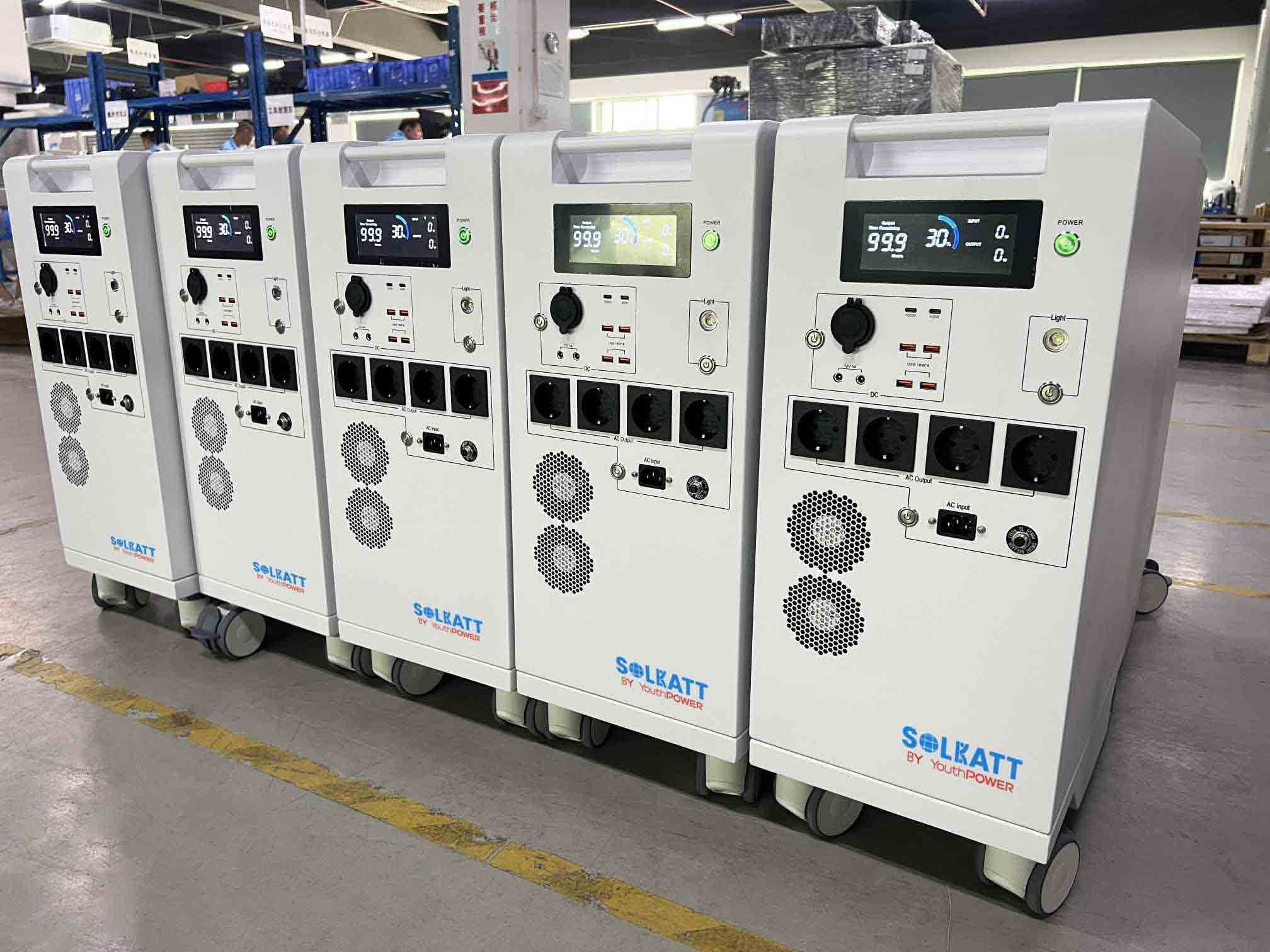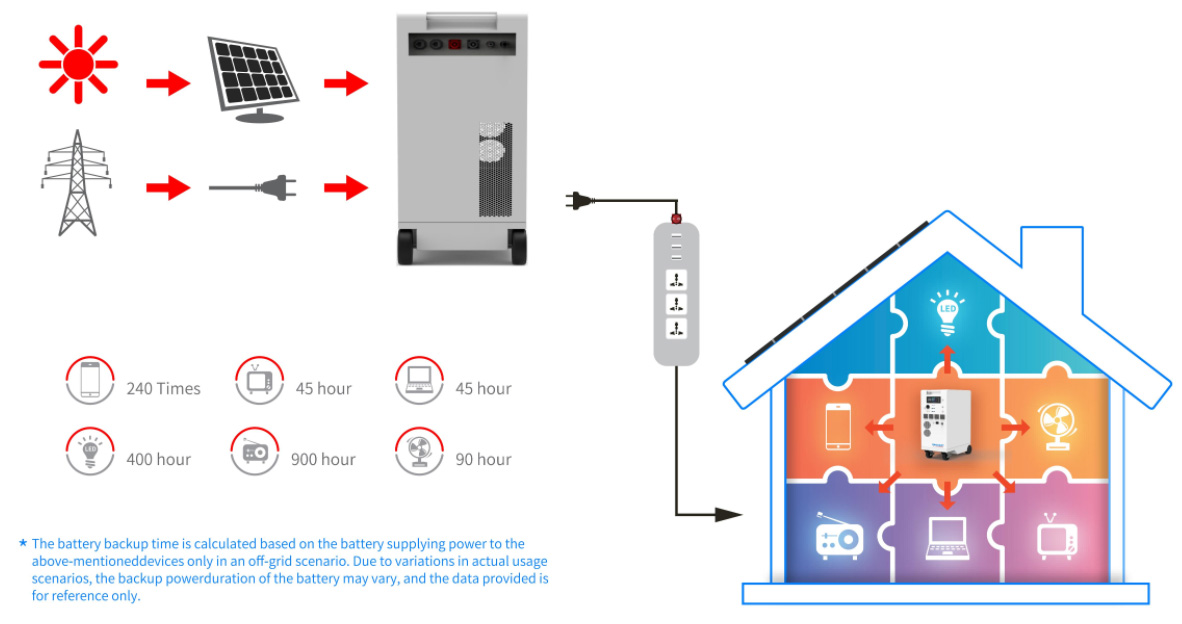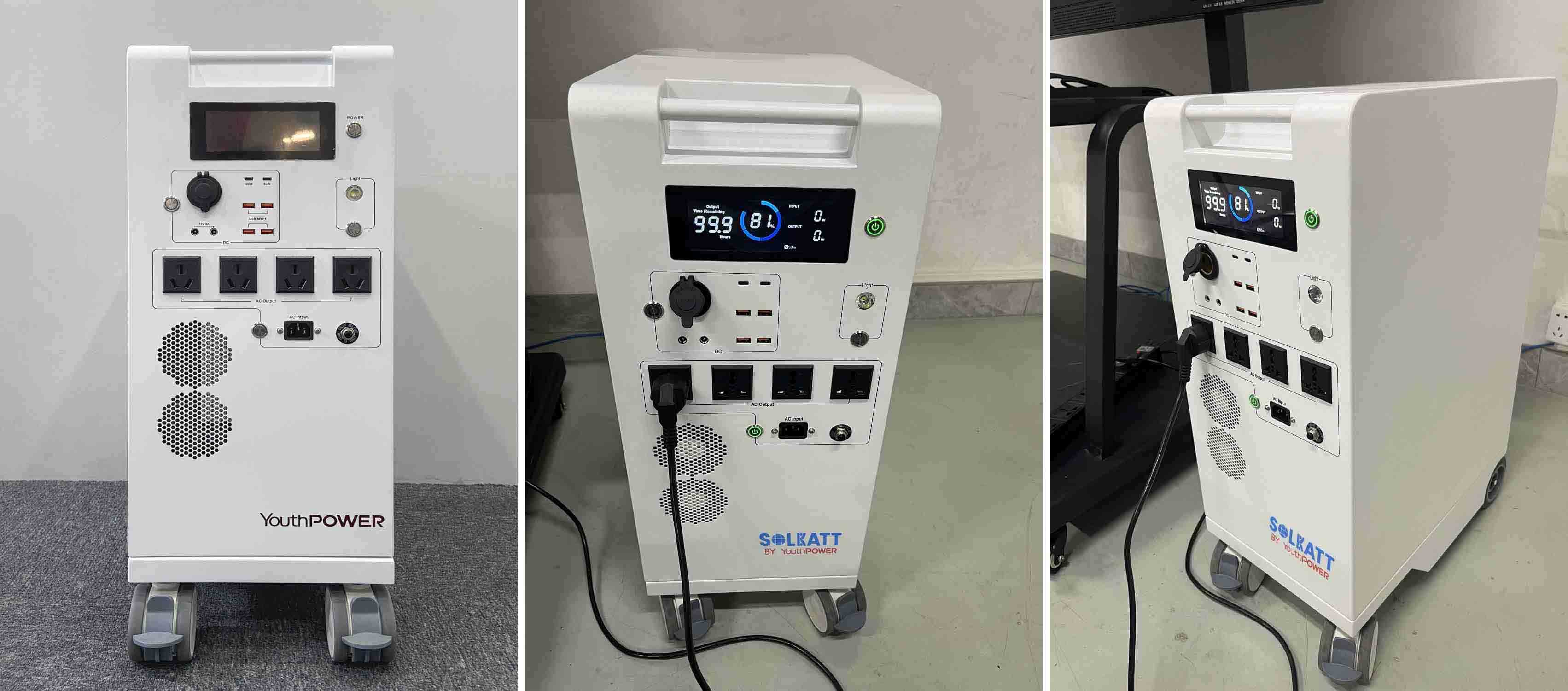If you want to choose the best load shedding battery for your home, the ideal choice comes down to accurately calculating your essential power needs and selecting a reliable Lithium Iron Phosphate (LiFePO4) battery with the correct capacity and voltage. You can follow these four key steps to find the perfect battery backup for load shedding and ensure your peace of mind during power outages.
Step 1: Audit Your Essential Power Needs
The first and most crucial step is determining how much power you actually need to keep your household running smoothly.
Start by making a detailed list of all appliances and devices that must remain operational during load shedding. Think beyond the basics—while most people consider Wi-Fi routers, lights, televisions, and refrigerators, you might also want to include devices like modems, chargers, laptops, or medical equipment if applicable.
Next, identify the running wattage of each item. This information is usually available on a manufacturer’s label or in the user manual. If you can’t find it, a quick online search for the model number should provide the details. For example, a modern refrigerator typically uses between 100 and 300 watts, while a Wi-Fi router may use only 5 to 20 watts. LED lights are efficient at around 5-10 watts each, but a television could range from 50 to 200 watts depending on size and technology.

Add together the running wattage of all these items to calculate your total running watts. This sum is the foundation for selecting a battery or inverter system that can handle your needs without being underpowered. Remember, some appliances—like refrigerators—have startup surges that require extra power. Factoring in this surge wattage ensures your system won’t overload when devices switch on.
Taking the time to accurately calculate your power requirements will help you choose a backup power solution that’s both efficient and reliable, keeping you connected and comfortable during extended outages.
Step 2: Calculate Battery Capacity (Ah & V)
Next, translate your power requirements into battery specifications. Multiply your total running watts by the number of hours you need backup to get your total Watt-hours (Wh). For most homes, a 48V system is the standard for efficiency and power. Use this formula:
Required Battery Ah = Total Wh / Battery Voltage (48V).
For example, if you need 4800Wh, a 48V 100Ah battery would be a suitable choice for your load shedding battery backup.

Step 3: Prioritize LiFePO4 Technology
When selecting the best battery for load shedding, chemistry is of utmost importance. Always prioritize Lithium Iron Phosphate (LiFePO4) over older technologies. LiFePO4 batteries for load shedding offer a superior lifespan (lasting thousands of cycles), enhanced safety due to stable chemistry, and the ability to be deeply discharged without damage. They are the most cost-effective long-term load shedding battery solution.

Step 4: Look For Key Features & Warranty
Finally, examine the specific features. Ensure the battery pack for load shedding has a built-in Battery Management System (BMS) for protection against faults. Verify it is designed as a lithium deep cycle battery for this application. If you plan to add solar later, choose a model that is solar-ready for an easy upgrade to a solar battery backup for load shedding. A strong warranty is the best indicator of the manufacturer's confidence in their product.
By following these steps, you can confidently invest in a loadshedding backup system that reliably powers your home. Start your journey to energy independence today.
Frequently Asked Questions (FAQs)
Q1. What is a load shedding battery?
A1: A load shedding battery is a dedicated energy storage system designed to provide automatic and instantaneous backup power during planned power cuts, known as load shedding.
Q2. What is the best battery for load shedding?
A2: When selecting the best battery for load shedding, LiFePO4 solar battery is the best investment, as its safety, maximum efficiency and more than 10+ years lifespan.
Q3.Can I integrate a load shedding battery with my existing solar panels to keep my power on at night during outages?
A3: Absolutely, and that's a fantastic way to maximize your solar investment! Many modern hybrid inverters and batteries are designed for exactly this purpose. During the day, your solar panels can power your home and charge the battery. Then, when load shedding hits at night, your system seamlessly switches to using the stored solar energy in your battery storage instead of the grid. The key is ensuring your inverter is a "hybrid" model that can manage both solar input and battery storage. You'll want to ask your solar provider about "retrofitting a battery" to your current setup.
Q4: How long will a typical home battery backup system last to power my essentials through prolonged load shedding stages?
A4: This is a common concern, especially with longer Stage 4, 5, or 6 power cuts. The duration isn't a single number—it depends entirely on your battery's capacity (measured in kWh) and what you're powering. For example, a 5kWh battery (a common size) could run your fibre modem, LED lights, TV, and laptop for well over 8 hours. However, if you add a high-consumption appliance like a kettle, hair dryer, or fridge, that will drain the battery much faster. Think of it like a phone battery: streaming video drains it faster than just leaving it on standby.
Q5: What's the average maintenance required for a lithium-ion home battery system, and are they expensive to look after?
A5: Great news here—one of the biggest advantages of modern Lithium-ion (LiFePO4) batteries is that they are virtually maintenance-free. Unlike old lead-acid batteries that needed regular watering and cleaning, you don't have to do anything with a lithium battery. They are sealed units with sophisticated built-in Battery Management Systems (BMS) that handle everything from charging to temperature control. There's no ongoing cost for "maintenance" itself. Your primary consideration is the upfront investment, which can pay for itself over several years by saving you from lost productivity, spoiled food, and the hassle of constant power interruptions.
Ready to find your perfect match? Explore our detailed buyer's guide for more expert tips.
>> What is a Load Shedding Battery? The Complete Guide for Homeowners
